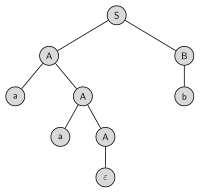Concrete syntax tree

Okay kiddo, have you ever seen a Lego tower being built? Just like that, programming languages also have a specific construction we call syntax. Think of syntax like Lego blocks that are used to build different structures. Now, when a programmer writes a code, it has to follow a specific syntax, just like how the Lego tower has to be built block by block.
Once the programmer writes the code, the computer has to understand it. But computers can't read all of our fancy words and grammar like we can. Instead, they use something called a concrete syntax tree to understand the code, just like how we need a set of instructions to build the Lego tower.
Think of the concrete syntax tree as a visual representation of the code. It shows how the code is structured in a tree-like manner. Just like how the foundation is the most important part of a Lego tower, the root of the concrete syntax tree is the most important part of a code.
Every branch of the tree represents a part of the code and shows how it's related to others. Just like how the different sections of the Lego tower stick together, each part of the code sticks together to make sense.
So, if a programmer doesn't follow the specific syntax rules, the computer won't be able to make sense of the code, just like how the Lego tower won't stand if the instructions aren't followed.
That's why it's important to understand and follow the syntax rules when writing code, so that the computer can understand it and execute it successfully.
Once the programmer writes the code, the computer has to understand it. But computers can't read all of our fancy words and grammar like we can. Instead, they use something called a concrete syntax tree to understand the code, just like how we need a set of instructions to build the Lego tower.
Think of the concrete syntax tree as a visual representation of the code. It shows how the code is structured in a tree-like manner. Just like how the foundation is the most important part of a Lego tower, the root of the concrete syntax tree is the most important part of a code.
Every branch of the tree represents a part of the code and shows how it's related to others. Just like how the different sections of the Lego tower stick together, each part of the code sticks together to make sense.
So, if a programmer doesn't follow the specific syntax rules, the computer won't be able to make sense of the code, just like how the Lego tower won't stand if the instructions aren't followed.
That's why it's important to understand and follow the syntax rules when writing code, so that the computer can understand it and execute it successfully.
Related topics others have asked about:
